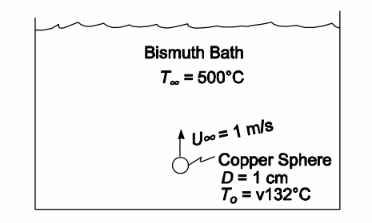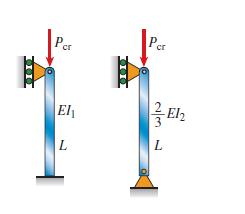What happens inside a reference system with a constant acceleration?
a. Objects appear to move exactly the same way that they do without that acceleration.
b. Everything moves at a constant speed.
c. The acceleration cannot be recognized by any experiment within the reference system.
d. The acceleration can be recognized because a falling object seems to move in the direction of acceleration instead of straight down.
e. The acceleration can be recognized because a falling object seems to move away from the direction of acceleration instead of straight down.
e
You might also like to view...
A copper sphere initially at a uniform temperature of 132°C is suddenly released at the bottom of a large bath of bismuth at 500°C. The sphere diameter is 1 cm and it rises through the bath at 1 m/s. How far will the sphere rise before its center temperature is 300°C? What is its surface temperature at that point? (The sphere has a thin nickel plating to protect the copper from the bismuth.)
GIVEN
• A copper sphere with a thin nickel plating rising through a bath of bismuth
• Initial copper temperature (To) = 132°C (uniform)
• Bismuth temperature (T?) = 500°C
• Ascent velocity (U?) = 1 m/s
• Sphere diameter (D) = 1 cm = 0.01 m
FIND
(a) Distance sphere will rise before its center temperature, T(o,t) = 300°C (b) The sphere surface temperature at that time, T(ro,t) ASSUMPTIONS
• Thermal resistance of the nickel plating is negligible
• Thermal properties of the copper can be considered uniform and constant
SKETCH

If a light signal and a radio signal were emitted simultaneously from the Moon, the first signal to reach Earth would be
A) radio. B) light. C) both of these D) none of the above
Two pipe columns are required to have the same Euler buckling load Pcr. Column 1 has flexural rigidity EI1 and height L; column 2 has flexural rigidity (2/3)EI2 and height L. The ratio (I2/I1) at which both columns will buckle under the same load is approximately:

(A) 0.8
(B) 1.0
(C) 2.2
(D) 3.1
Imagine you are plunging into the Sun, starting from Earth. Briefly describe what you will experience on your journey
What will be an ideal response?